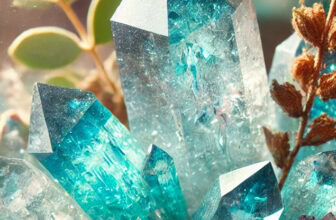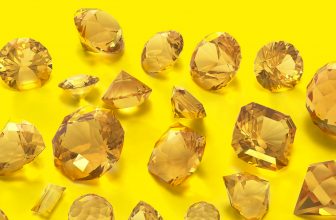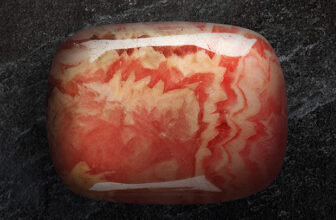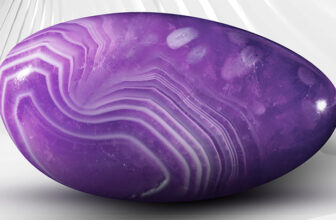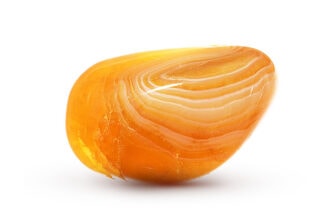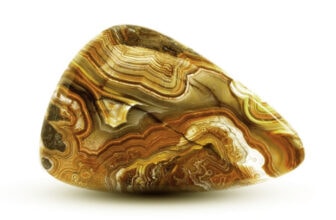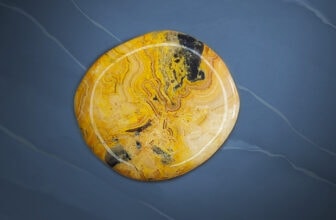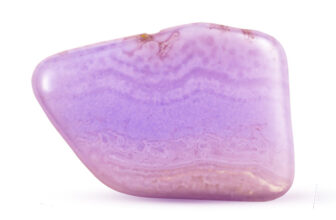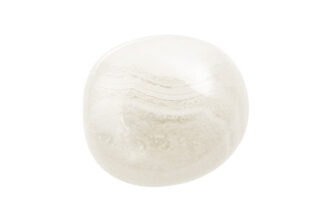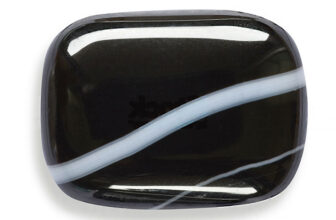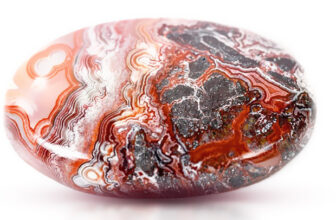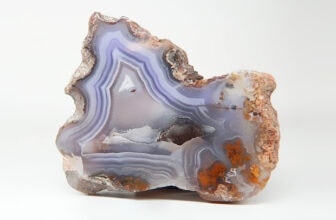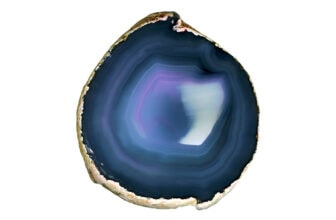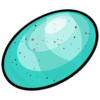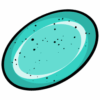Tiny Treasures: The World of Crystal Chips
 Ever wondered how something so small could feel so powerful? Crystal chips may look like tiny gemstone confetti, yet each one carries the same geological and energetic story as its larger crystal relatives. These are the miniature marvels of the crystal world – little fragments of tumbled or polished stone, usually a few millimetres to about a centimetre wide, each with its own shimmer, hue, and quiet energy.
Ever wondered how something so small could feel so powerful? Crystal chips may look like tiny gemstone confetti, yet each one carries the same geological and energetic story as its larger crystal relatives. These are the miniature marvels of the crystal world – little fragments of tumbled or polished stone, usually a few millimetres to about a centimetre wide, each with its own shimmer, hue, and quiet energy.
They might come from the trimming of larger gemstones or be intentionally shaped for use in craft and energy work. Either way, their appeal lies in their variety and accessibility. You don’t need a collector’s cabinet or a big budget to enjoy them – a handful of crystal chips can already fill a bowl, decorate a candle, or build a stunning energy grid on your desk.
Crystal chips sit in an intriguing niche among crystal forms. They aren’t rough chunks, precise cabochons, or cut gemstones designed for brilliance. Instead, they celebrate texture and abundance – the joy of having many small pieces you can blend, scatter, string, or hold in creative chaos. Their small scale invites experimentation: you can mix amethyst with clear quartz, tuck rose quartz into your houseplants, or even infuse your bath salts with aventurine for a touch of green calm.
From Fragments to Foundations
The word chip has humble roots. In old English, it simply meant a “small piece broken off from a larger block.” In lapidary terms, a crystal chip is exactly that – a sliver of gemstone separated from a bigger specimen. Yet what was once considered a by-product of gemstone cutting has become a cherished form in its own right.
Long before “crystal chips” appeared as a modern retail term, small fragments of precious stone were prized in ancient craft. Think of the intricate mosaics of Rome and Byzantium, where chips of lapis lazuli and malachite formed sky-blue domes and lush green vines in stone. Or the inlaid tables and ornaments of Mughal India, where tiny shards of semi-precious stone transformed marble into living art. Even then, artisans recognised the creative power of fragments.
Benefits, Uses, and Everyday Magic
Feeling stuck, scattered, or creatively drained? Sometimes the best way to shift that energy isn’t with a single, showstopping stone – but with a handful of small, sparkling possibilities. Crystal chips invite play, curiosity, and balance. They don’t just sit on a shelf; they flow through your space and your imagination.
Accessible Magic
Let’s start with something practical – cost. Because chips are fragments rather than full specimens, they’re one of the most affordable ways to explore crystals. You can collect a rainbow of stones without breaking the bank. Amethyst for calm, citrine for clarity, rose quartz for softness – each chip holds the same energetic signature as its larger version, just in a smaller, more approachable form. For beginners, this makes them perfect stepping stones into the world of crystals.
Versatility Beyond Measure
What can you do with crystal chips? Almost anything. Sprinkle them around candles for ritual focus, line them in plant pots to boost greenery, or pour them into small jars to create colour-coded “energy bottles.” Artists use them in resin art and mosaics. Spiritual practitioners use them in crystal grids, where many small stones combine to amplify a specific intention. Even a simple bowl of mixed chips on your desk can act as a miniature energy field – catching light, diffusing tension, and reminding you to breathe.
The real beauty of crystal chips is their flexibility. Unlike a single large stone, which defines a space, chips adapt to whatever space you give them. They can fill gaps, accentuate textures, or layer energies. Want to blend grounding smoky quartz with energising carnelian? You can. Chips encourage mixing – they thrive on variety.
Small, But Energetically Complete
Skeptical about whether tiny fragments can really “hold” energy? From a scientific point of view, each chip retains the same crystalline structure as the larger mineral it came from. Its lattice – the precise, repeating arrangement of atoms that defines a crystal – is intact.
That structure is what gives crystals their physical stability and, according to metaphysical perspectives, their energetic resonance. In short: the energy doesn’t vanish just because the stone is smaller.
When to Choose Chips Over Larger Stones
Crystal chips shine when you need quantity, layering, or a subtle presence rather than a single focal piece. They’re perfect for:
- Budget-friendly collections – when you want variety over size.
- Creative projects – jewellery, candles, resin art, and décor.
- Energy grids – their small form makes complex geometric patterns possible.
- Everyday rituals – where you can scatter, mix, or carry small stones easily.
Shapes, Styles & Sparkle
Ever noticed how no two crystal chips are quite the same? That’s part of their charm. They’re the rebels of the crystal world – irregular, unpredictable, and gloriously varied. Each chip holds its own story in miniature form, shaped by both the hand of nature and the tumbling of human craft.
The Shape of Small Wonders
Most crystal chips are irregular fragments, softly rounded through tumbling. Their edges are smoothed, yet their natural contours remain – a mix of polish and rawness that keeps them feeling alive. Some look like tiny shards of coloured glass; others resemble frosted sea pebbles, perfectly pocket-sized.
You’ll find chips ranging from a few millimetres to about a centimetre or more. The smallest ones glimmer like sand under light, while the larger “mini-chip” stones are substantial enough to catch between your fingers. When used together – whether scattered in a bowl or strung into jewellery – their irregularity creates a texture that feels organic, not manufactured.
Polished, Raw, or Somewhere In Between
Crystal chips come in different finishes, each offering its own mood:
- Tumbled/polished chips are smooth, glossy, and tactile – perfect for jewellery, decorative bowls, or crystal grids. They have a softness that invites touch.
- Rough or natural chips retain a more rugged look, sometimes with angular breaks and matte surfaces. These feel more “earthy,” ideal for plant décor or energy work where you want raw, untamed energy.
- Enhanced or dyed chips occasionally appear in the market – brightly coloured or artificially intensified. They can be striking in art or décor, though purists may prefer untreated stones for energetic authenticity.
Crafted for Purpose
Not all chips are created equal – their shape often depends on how they’re intended to be used.
- For jewellery, chips are generally smaller and more uniform, drilled or shaped for stringing. Their smoothness makes them comfortable to wear while maintaining that delightful, natural irregularity.
- For décor and grids, you’ll find mixed-size chips sold by weight – beautiful for layering around candles, filling glass jars, or outlining sacred geometry patterns.
- For crafts or resin work, consistency in size matters less; colour harmony and texture take the lead.
And then there are the outliers – larger “chip slabs” or small plates that blur the line between chip and slice. These hybrid forms capture the layered beauty of chips but with more surface area, often used in coasters, wall art, or altar pieces.
Materials
Almost every crystal imaginable has a chip form. The classic favourites – amethyst, rose quartz, citrine, aventurine, tiger’s eye, clear quartz – are just the beginning. You can find chips of labradorite flashing with blue fire, lapis lazuli speckled with gold, or even selenite for pure white clarity. Some collectors arrange them by chakra colour, creating rainbow sets that correspond to specific energy centers.
And because chips invite mixing, artists and healers alike often create their own blends – “grounding mixes,” “love blends,” “clarity chips.” In one jar, smoky quartz might mingle with hematite; in another, fluorite and sodalite share their cool, intellectual glow.
The Beauty of Imperfection
Perhaps the most captivating thing about crystal chips is their imperfection. Their shapes resist uniformity, and that’s what makes them feel real. When you run your fingers through a bowl of chips, there’s a gentle clinking sound – a whisper of Earth’s fragments talking among themselves.
They remind us that perfection isn’t the goal – connection is. Each chip, no matter how small or uneven, contributes to a larger mosaic of energy and colour. Together, they create something whole.
How Crystal Chips Are Made
Have you ever wondered where crystal chips actually come from? They seem so natural – like pebbles washed smooth by time – yet behind every handful of chips lies a quiet process of transformation. It’s part geology, part craftsmanship, and part creative recycling.
From Rough Beginnings
Most crystal chips start their journey as leftovers. When lapidaries cut and shape larger gemstones for jewellery or décor, small fragments break away. Instead of being discarded, these offcuts are gathered – tiny remnants of what were once grander slabs or clusters. In a way, crystal chips are the ultimate act of renewal: pieces given new purpose instead of being lost to dust.
Sometimes, though, chips are intentionally created. Manufacturers may cut rough stone into small segments specifically for tumbling. The goal isn’t precision but personality – to capture the spirit of the mineral in a bite-sized form.
Tumbled to Life
Once the small pieces are collected, they’re placed in tumbling machines – barrels lined with grit and water that slowly rotate, mimicking the natural erosion of rivers and waves. Over several days or weeks, sharp edges soften, corners round, and the crystals begin to shine.
The process often happens in stages:
- Coarse tumbling smooths the edges.
- Medium grit rounds and refines.
- Fine polishing brings out the stone’s natural sheen.
Each material behaves differently. Hard stones like quartz or jasper polish beautifully, while softer ones like fluorite or calcite need a gentler touch. Too much tumbling, and they crumble; too little, and they stay dull. It’s a delicate balance – a kind of dance between stone and motion.
Sorting the Spark
After tumbling, the chips are washed and dried. Then comes the meticulous part: sorting. Chips are sifted by size, colour, and sometimes clarity or finish. The smallest are sold for resin art and grids, while the larger, more uniform ones are often drilled for jewellery.
Sorting is where the “mass magic” happens. Imagine thousands of tiny stones glimmering across a table, gradually separating into families – all the rose quartz here, all the amethyst there – a living spectrum of colour and energy.
Polished for Purpose
Depending on their final destination, chips may receive additional finishing touches.
- For craft and décor, a light polish is often enough. Their natural irregularity adds texture and authenticity.
- For jewellery, they’re polished longer, sometimes waxed or oiled to enhance lustre and ensure smoothness against the skin.
- For energy work or meditation kits, chips are chosen not just by appearance but by “feel” – practitioners often prefer stones that seem energetically balanced and pleasant to touch.
DIY and the Art of Tumbling
For hobbyists, making crystal chips at home is both possible and rewarding. Many collectors save broken or chipped stones, tumble them in small batches, and watch as dull fragments turn into shining treasures. It’s slow work – patient, rhythmic, almost meditative. You load the barrel, add grit, close the lid, and let time do its work.
What emerges is more than just polished stone. It’s a kind of alchemy – transformation through motion. Each chip carries the marks of both natural formation and human care, bridging deep time with deliberate craft.
Picking & Using Your Chips
Ever stood in front of a pile of tiny stones and felt overwhelmed? So many colours, textures, and shapes – where do you even begin? Choosing crystal chips is less about rules and more about intuition. Start with your intention: what do you want to create, feel, or experience?
Selecting Your Chips
- Material matters: Each crystal type carries its own energetic signature. Rose quartz brings softness and love, amethyst encourages calm and clarity, citrine sparks creativity. Even in chip form, these properties remain intact.
- Size & finish: Decide how you’ll use them. Small, smooth chips are ideal for jewellery or stringing into bracelets, while rough or mixed-size chips work beautifully in décor, plant pots, or crystal grids.
- Quality check: Even though chips are affordable, inspect for sharp edges or cracks if you’ll handle them frequently. A tiny chip can pack a lot of energy, but a jagged one might hurt your hands or snag stringing wire.
- Volume & variety: Are you creating a single-colour piece or a rainbow mosaic? Buying in bulk can be cost-effective, but consistency in size may be necessary for structured projects.
Using Your Crystal Chips
- Jewellery: String them into bracelets, necklaces, or anklets. Mixed chips create texture and playful colour combinations.
- Crystal grids: Surround a central “generator” stone with chips to amplify energy patterns. Small chips make layering intricate designs possible.
- Décor & craft: Fill glass jars, bowls, or terrariums. Embed them into resin art or mosaics for a tactile, colourful effect.
- Rituals & baths: Depending on water safety, chips can be placed in sachets, ritual bowls, or even bath salts to impart intention.
The key is experimentation. Chips encourage creativity because their small size allows freedom: scatter, mix, layer, and rearrange until the energy and aesthetics feel right.
Popular Stones & Special Finds
Crystal chips come in nearly every gemstone imaginable, but some have become particularly popular due to their colour, energy, and availability.
- Classics: Amethyst, rose quartz, citrine, tiger’s eye, aventurine, clear quartz. These versatile chips are perfect for grids, décor, or beginner collections.
- Chakra & intention sets: Sets of seven or more colours/types, often sold together for energy balancing or meditation.
- Decorative varieties: Moss-agate in plant pots, labradorite with its subtle shimmer for display, or selenite for soft, luminous bowls.
- Jewellery strands: Chips drilled and strung as beads, ready for bracelets, necklaces, or anklets.
- Artistic blends: Mixed stones for resin art, mosaics, or candle décor. These often combine colour, texture, and energy intention in one set.
- Bulk décor chips: Large quantities for crystal bowls, vases, or layered visual displays.
The beauty of crystal chips is their flexibility: nearly any polished stone can eventually appear in chip form, giving you endless creative possibilities.
The Ups and Downs: Pros and Cons of Crystal Chips
Like any form of crystal, chips have their strengths and limitations. Understanding them helps you choose the right stone form for your project or practice.
Pros
- Affordable variety: Access multiple stone types and colours without spending a fortune.
- Highly versatile: Perfect for jewellery, craft, décor, grids, and ritual work.
- Encourages creativity: Mix, layer, and combine stones freely.
- Beginner-friendly: Great for those starting a collection or crafting with crystals.
- Bulk-friendly: Ideal for filling jars, bowls, or creating large visual or energetic displays.
Cons
- Less dramatic display: Small fragments don’t have the “wow factor” of a large crystal or faceted gem.
- Fragility and handling: Tiny pieces can be tricky to clean, string, or keep track of.
- Variable quality: Chips often come from leftover or lower-grade material; polish, colour, and clarity may differ.
- Limited focal use: Not ideal if you need a single standout piece for display or jewellery setting.

